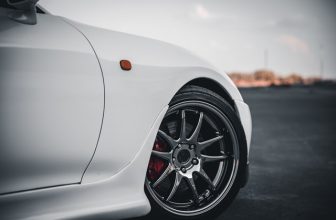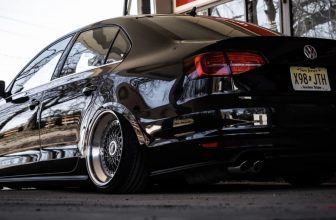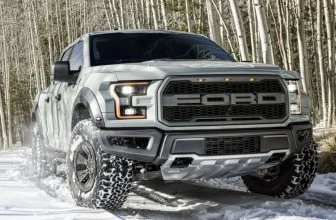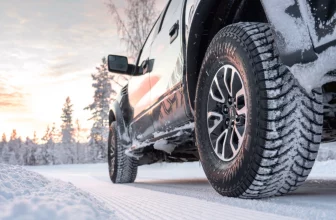By nature, most drivers like experimenting. Otherwise, how will you know the possibilities of your vehicle? How can you certify that the engine horsepower does actual work to deliver superior results? Seasonal changes present better opportunities for car enthusiasts rather than problems.
Think for a minute, at what snow or ice depth will the car be immovable? Now, think of the challenges that you must overcome to traverse snow-covered roads without spinning or consuming excess fuel than usual. How well-prepared are you to go for a wild adventure in extreme winter? Will your current tire deliver or disappoint? Are you aware of studded winter tires?
In your random talks and driving experiences, you may have come across light snow on the roads. If you have suitable tires, handling is easy peasy. Maybe, your first experience was chaotic.
The ultimate ice or snow driving challenge is in snow that is deeper than the usual snow depth. Think of something that is more than twice as deep as the late winter snow. I bet you are wondering how people manage to drive over such unpredictable, sometimes invisible roads.
At first, you expect traction problems. That means struggling to take control of your car. You have to choose between safe braking distances and adequate acceleration. Ordinary tires such as all-terrain all-season tires and performance all-season tires will perform poorly in similar conditions. Performance snow tires may provide better results but are not impressive.
Whether the roads are snow or ice-covered, people and goods must move. We debunk the confusion around the prime winter tires. We provide data-based recommendations so that you select the best set of tires when winter comes calling.
| Tire name | Winter/snow performance | Steering response | Wet performance | Hydroplaning resistance | Wet traction | Dry performance | Cornering stability | Dry traction | Comfort performance | Ride quality | Noise score | Treadwear performance |
|---|---|---|---|---|---|---|---|---|---|---|---|---|
| General Altimax Arctic 12 | 9.1 | 8.1 | 8.7 | 8.8 | 8.6 | 8.2 | 8.1 | 8.5 | 8.2 | 8.7 | 7.7 | 8.6 |
| Goodyear Ultra Grip Winter | 8.8 | 7.9 | 8.7 | 8.7 | 8.7 | 8.1 | 7.8 | 8.6 | 8 | 8.3 | 7.6 | 8.5 |
| Firestone Winterforce 2 | 8.7 | 7.8 | 8.5 | 8.7 | 8.4 | 8 | 7.8 | 8.4 | 7.8 | 8.1 | 7.4 | 8.2 |
Design Characteristics of Best Studded Winter Tires
Well-spaced Metallic Studs
By now, you are aware that the advanced tread material and optimized tread patterns play a role in the performance of winter tires. Every perfect thing has its silver lining. Driving in extreme winter weather requires consistent retention of surface traction. There are no two ways when it comes to handling vehicles on slippery or slushy roads.
Luckily, several states in America permit the fixation of metallic studs on winter tires. Few countries across the world permit car owners to drive on studded winter tires. So before you gladly purchase these tires, confirm with the local authority if they are permissible within your commuting zones.
These tires are a bit defiant to the rules of tire traction. Yes, the studs reduce the effective contact surface area of the tire. We know that the size of the tread in contact with the road surface is directly proportional to the traction force. The traction technique for these tires depends on the ability of the studs to grip firmly on the ground, whether dry, wet or slippery.
One odd thing about these oddly-looking tires; they can be as inefficient as a low-performance snow tire when driving on light snow. The reason is simple. The thin layer of snow does not offer sufficient ground for hooking the protruding studs.
But wait, did you say deep snow is the final destination? Yes, the studs grip firmly and cut deep into the thick snow or ice surface. At this moment, the driver feels as if they are driving on the dry tarmac with an optimized high-performance tire.
It is easy to steer the vehicle. The tires respond promptly to cornering, accelerate well and are simple to break. In simple words, the best studded winter tires turn amateurs into professionals.
Resilient Rubber Materials and Tread Additives
The worst nightmare for drivers frequenting snow-covered or icy roads is the freezing of tires. In harsh winter, temperatures drop below 0oC. Ordinary rubber crumbles under these conditions. The best studded winter tires use layers of the latest and advanced rubber materials.
The tread layers are thick enough to allow fixing and removal of metallic studs without puncturing the tires. At the same time, the tread compound boasts exceptional flexibility. Surrounding temperatures can drop significantly, yet the tires retain their shapes and sizes.
With this capability, the performance of the tire over snow remains subtle. Of course, if all physical parameters remain constant, the quality of the ride on uneven snow is decent, if not excellent.
3PMSF Symbol
The ultimate indicator of a tire designed for superior winter performance is the snowflake symbol. Like other high performance winter tires, these workhorses have a visible 3-peak mountain snowflake symbol on the sidewall. If you are unable to make a sound decision on the choice of the perfect winter tire, this universal symbol helps you in subsequent decisions.
Pros & Cons of the Best Studded Winter Tires
How does the Studded Winter Tire Compare to Other Tire Categories?
As a high performance winter tire, you would expect these tires to outshine standard and performance snow tires. Their specialty is deep snow and thick ice. They deliver appropriate traction as long as the surface is hard-packed and can hold the protruding studs sufficiently.
As the snow thins, the tires become ineffective demanding immediate tire changes to performance winter tires or ultra high performance all-season tires.
With the stringent industry regulations on the usage of these tires, it is difficult to comprehensively compare performances under different driving conditions against popular tire categories.
Verdict
The only reason you should buy the best studded winter tires is when you have to drive in the coldest moments of the year. The depth of the snow or ice has to be substantial, otherwise, you will own costly tires with little or no improvement to car performance.
Frequently Asked Questions
Can you Drive on Studded Winter Tires Anywhere across the US?
No. Few states permit the unconditional use of studded winter tires. They are New Hampshire, New Mexico, Colorado, Vermont, Kentucky and Wyoming.
You need authorization from some state authorities while others restrict these tires completely. Conduct due diligence depending on your area of operation before settling on these winter beasts.
Are the Protruding Metal Studs Permanent?
Metallic studs are removable. You can do away with them when the wintry conditions subside. As you approach the next winter, book an appointment with your tire technicians who will fix the studs or check their conditions in old tires.






